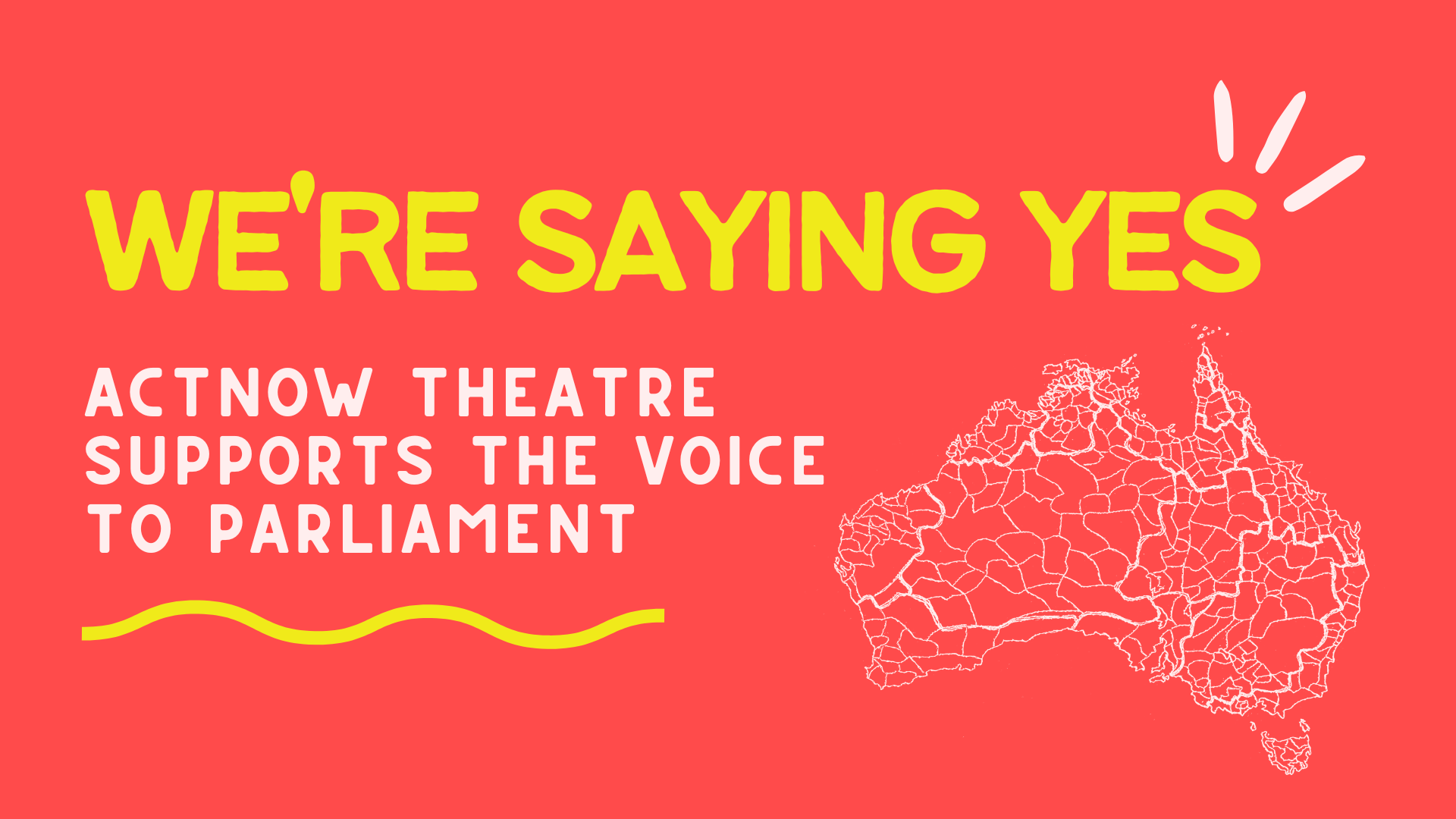Behind The Scenes: Arran Beattie & DECAMERON 2.0
The first two episodes of DECAMERON 2.0, presented by State Theatre Company South Australia and ActNow Theatre, have introduced us to twenty new characters showcasing the breadth of passion and talent in our state.
Last week, we heard from Penn O’Brien and their experiences writing Charlie for the first episode. This week we turn to Arran Beattie, actor and writer of Anna-Paula Jettick.
Image Description: A person is standing in the middle of a warehouse. They are dressed in full drag, a black long-haired wig, a light blue denim jacket and dress with a red paint splatter with the words “YANKEE GO HOME”. Photographer: Provided by State Theatre Company South Australia.
Introduce yourself!
Hi! I’m Arran, but I’m also known as Marion Westfield (@missmarionwestfield). I’m an actor from Scotland and I was trained in theatre and screen acting at Flinders University’s Drama Centre here in Adelaide. However, I have had to teach myself how to become a drag queen over the past year, though I’ve been very lucky to receive help, exposure, and guidance from experienced professionals in the Adelaide drag community.
Tell us about your experience with DECAMERON 2.0 - How did you get involved?
Funnily, I was actually asked by a somewhat panicked Lachy Barnett in a Facebook message at like 9PM who was looking for someone like myself, someone experienced and trained as an actor and writer, and as a drag performer. I made myself available the very next morning for a meeting over Zoom with other Decameron 2.0 creators, including my invaluable mentor for the writing project, Annabel Matheson, and was invited to write a three-minute monologue about a drag queen within four days. It’s been kind of a whirlwind experience from the get-go.
What was the writing process like? Did you struggle with the theme or have an idea straight away?
Well, I was actually asked to write from the perspective of a drag performer and I know a fair amount about the particular point of view they would have and what informs them as a character. It was kind of like writing with two prompts, which helped to narrow down the directions I wanted to go in. I toyed with ideas of exploring sexuality and sex work for drag queens, drag queen story-time and trans drag performers in my writing, but given the time-crunch, I found it best to focus on writing what I know more about, rather than writing from a position of hurried research and assumptions and putting something potentially damaging and harmful out into the ether.
Tell us about the piece you’ve written.
Essentially, I wrote a pros and cons list of being a queer person and a drag queen. Groundbreaking.
But really, I wrote from a place that’s unabashed, defiant and unashamed and named her ‘Anna-Paula Jettick’, a play on the word ‘unapologetic’ as that’s the attitude I wanted the character to have. And also it’s really fun to come up with drag names.
I wanted to investigate the difficulties of being a queer performer and how your artform can bleed into your personal and political views. But after listing all of the ways Anna would ‘suffer’, as the prompt required, the piece needed some joy and so I wrote about how rewarding being a drag queen has been for me personally, and reached out to drag artists here in SA to speak with them about their positive experiences. That in itself was such a rewarding experience in being able to listen to their stories, and I am still so thankful that they let me use some of their words verbatim in the piece. I could not have written this piece without the assistance of these individuals and the community that they contribute to, and am indebted to them for being so open and honest with me. That is why I love the drag community in SA.
Image Description: A black and white photo of a film set. There are five people in the photo, four are working away and the fifth is looking back at the camera. Photographer: Provided by State Theatre Company South Australia.
Image Description: A black and white photo. A man is looking at something off-screen, focused intently on something. Blurred out in the background is a person is full drag. Photographer: Provided by State Theatre Company South Australia.
You ended up acting your piece as well! Tell us about that experience?
I can’t tell you how jarring it is to me in full drag at 1PM, fully sober, and performing a piece I’ve written myself to a camera in the middle of a freezing cold warehouse. It’s definitely not what I’ve become used to when it comes to performing in drag. And everybody else on set was wearing hats, scarves, and multiple layers to keep warm, but despite how revealing my costume appeared, in my corset, six pairs of tights, hip pads, and wig, I couldn’t have been warmer. Though in seriousness, I was honoured to be asked to perform the work I’d written for ActNow and State Theatre Company, and had the absolute best time on set. And since it was my work, Anthony Nicola, a friend of mine and my director for the shoot, trusted me to know the beats and the tone but helped me to let go of any tension I felt on set with wanting to ‘get it right’.
You were also the actor for a monologue in week one, tell us about that?
Speaking of Anthony, I’m overjoyed to see his progress as a director, as I briefly worked with him years ago at drama school and have been a friend since, but haven’t had the opportunity to work with him creatively until now. His direction was beautifully nuanced, collaborative, and he very quickly found a middle ground in terms of language we could use to speak with one another about Emma, Sarah Peters’ beautiful text.
We were both aware of the boundaries of performing in drag for one character, but not another, as it takes me about three hours to get into full drag from head to heel, so we were slightly unsure how to navigate Emma. But Anthony pitched me the idea to shoot week one’s piece after shooting my one, and have me wiping off the drag make-up on-screen whilst performing Sarah’s work. This meant we only had one take. One. It was a scary concept at first, but with some time to rehearse and with Anthony’s patience and direction, I was very much grounded and found such joy in performing it.
Who is Marion Westfield?
Marion Westfield is my drag persona for when I’m performing within the drag scene in clubs, bars and at people’s private functions. The character is only a year old, really, but she allows me so much more confidence (often blindly) when performing primarily to drunk people who are eager to see something fun and entertaining. I love to brainstorm ideas for ‘punny’ drag names, and have a whole list of them on my phone, and may someday switch to a different name. But my favourite then, and still now, is Marion Westfield, a silly joke about Westfield Marion, a shopping centre here in Adelaide. Though, since it’s an exclusively South Australian reference, the joke doesn’t travel too far, but it’s a huge hit with Adelaide locals when they hear it for the first time. As a migrant who’s only been here for six years, I’m surprised nobody’s ever used the mantle before. And like her namesake, Marion Westfield is great for retail therapy, she’s open for business and has had just as many bogans inside of her.
Image Description: A person is sitting on a chair, lit up. They are wearing a dark dressing gown. They have a full face of makeup and their eyes are closed. In the foreground, on either of the person, are two blurred out people. Photographer: Provided by State Theatre Company South Australia.
Tell us about your relationship with drag?
That’s a tricky one, actually, because it’s changed a great deal over the years, and much of it is in the text of the piece I wrote for episode two. I actually used to have a great deal of internalised homophobia and was initially grossed out by the idea of men dressing up as women in a serious way, like drag, as opposed to comedians who would just throw on a costume shop wig for a sketch so they would read as a woman – as though I had never wrapped a towel around my chest as a makeshift dress and put a t-shirt on my head for hair and sang along to Katy Perry in my bedroom mirror. My own insecurities didn’t allow me to give it much positive thought until I started going to gay events and bars and actually met drag queens in person, only to discover how kind and lovely they were. And, of course, my mindset began to change when I started to watch She-Who-Must-Not-Be-Named’s Drag Race. I watched it ‘ironically’ at first, because I found it hard to admit how much I enjoyed the art form and the craft. And then in drama school, I was asked to perform in drag in a production of The Importance of Being Earnest and that really showed me how fun it was to actually take part in drag, and that I could combine my interest in it with my career as an actor.
Now I absolutely love drag – I think it’s the ultimate all-rounder art form where you have to be skilled in so many different areas, which is also what makes it so hard. But hey, who doesn’t like a little bit of a challenge to ensure that you’re the centre of attention in any room you’re in?
What has the drag scene and community (either in Adelaide or wherever you’ve observed) been like during COVID-19?
In Adelaide, much of the scene had to shut down when it came to performance, especially since the one gay bar in town had to close its doors. However, I’ve been quietly impressed by others in the scene who have had the energy to stay active on social media or have even expanded into other artforms such as podcasts and DJing at smaller scale events, since they’ve been forced to stop performing in more conventional ways.
We’re a resilient bunch, I reckon. Even a global pandemic didn’t stop Drag Race from airing their latest season in the US and holding a ‘Lipsync for the Crown’ in the finalist’s homes via Zoom, as opposed to a grand finale filmed in a packed theatre like years past.
What do you hope people will take away from DECAMERON 2.0 and your piece in particular?
With my piece, I hope I open the minds of the statistically older, middle class and high-art focussed audience of State Theatre Company to a somewhat underground, dirty and political art form that doesn’t get the recognition and praise it deserves, as it’s only ever expected to be seen on small stages in bars, very late at night and to audiences of people who have had maybe one too many vodka soda limes.
Drag takes work. Just as much as, if not more than, working as an actor in a production in the theatre or on screen, but somehow there’s not the same financial revenue or esteemed reputation for the performer in the wig. It’s not fair that drag artists, predominantly queer people, aren’t seen at the same level as other performers in our society. Read into that what you will.
DECAMERON 2.0 is presented by State Theatre Company South Australia and ActNow Theatre.














